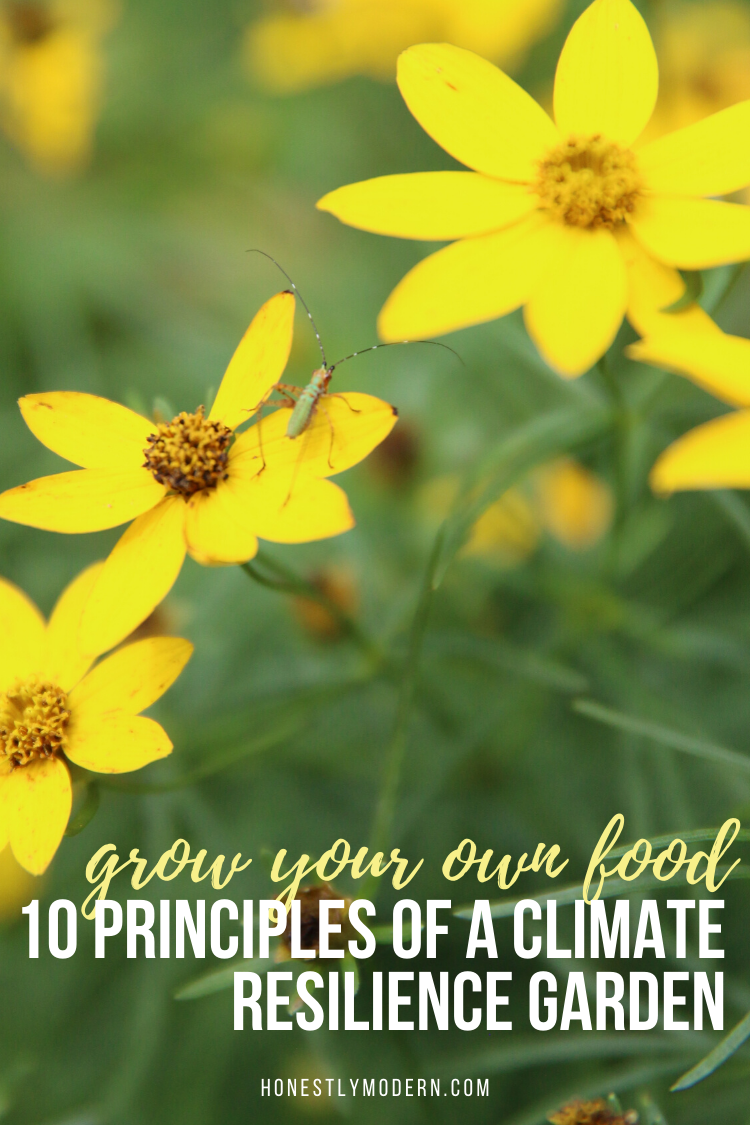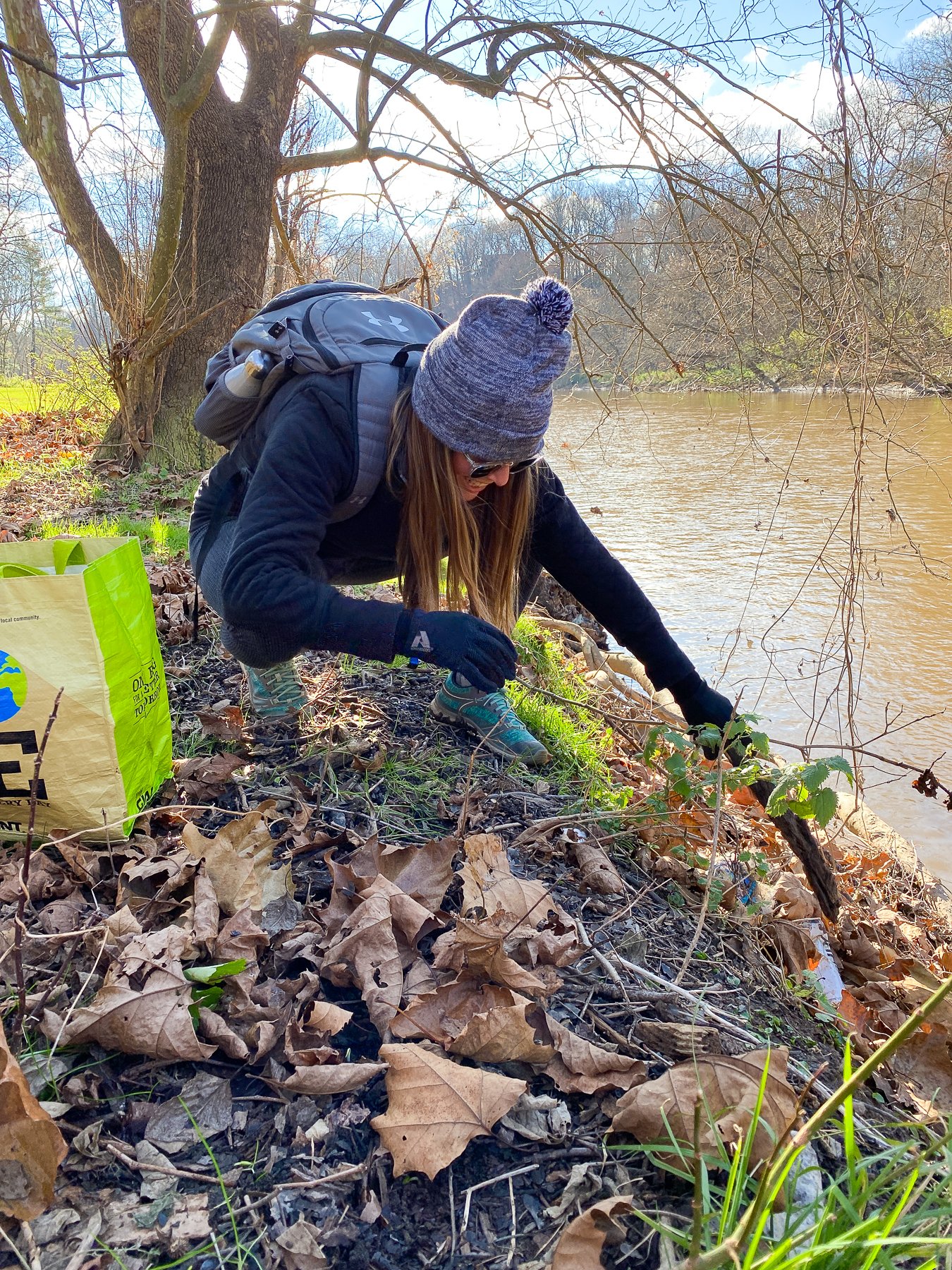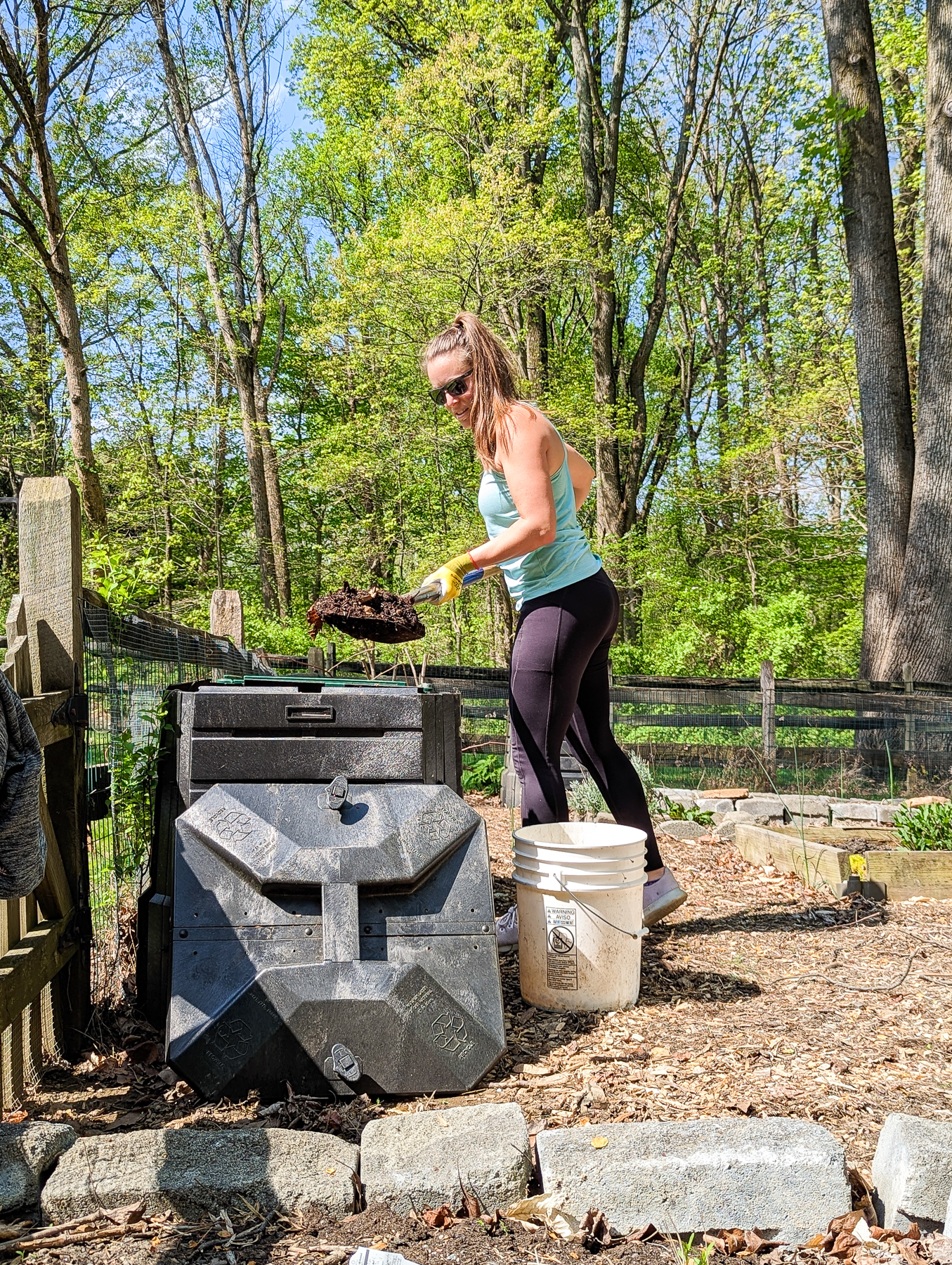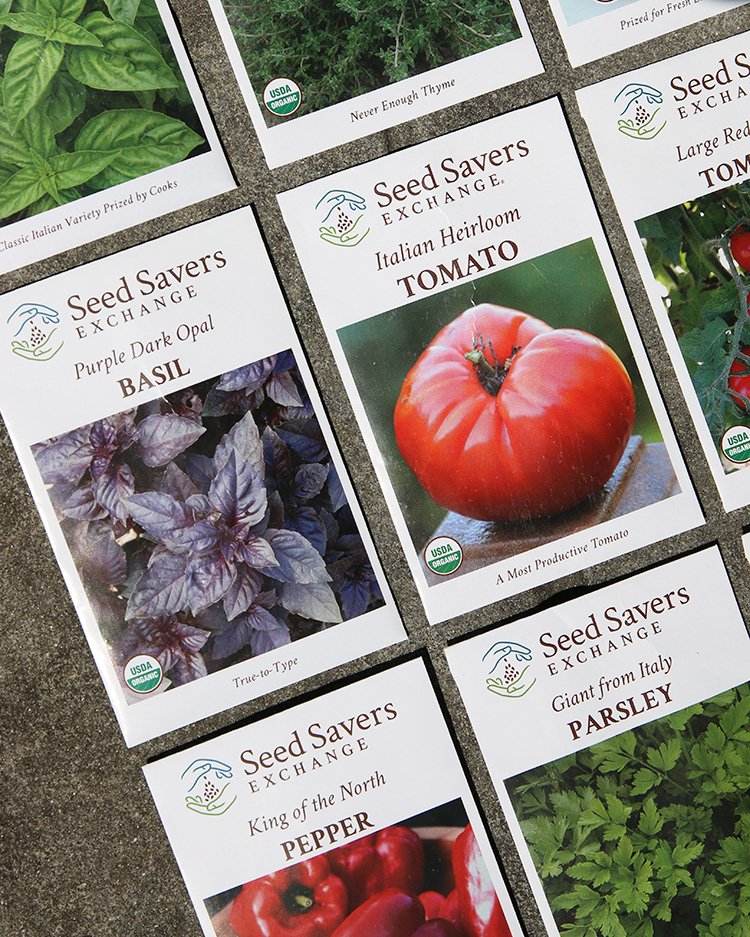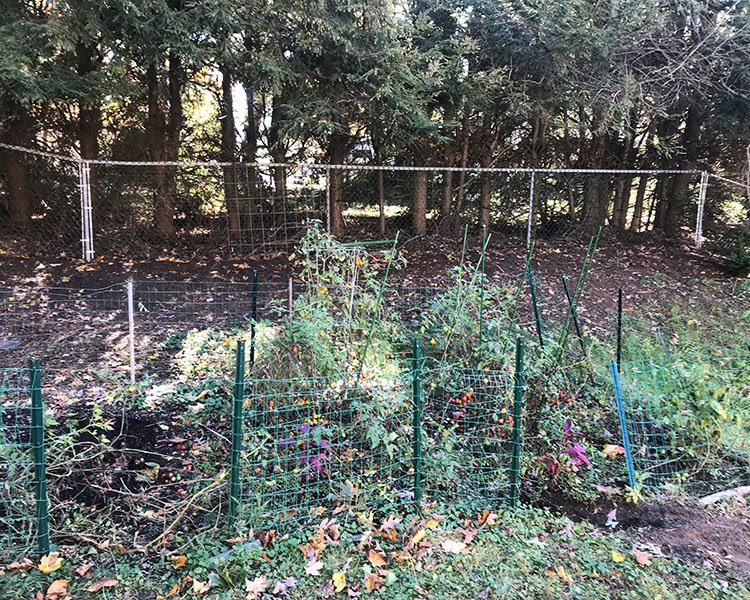10 Principles Of A Climate Resilience Garden
What do gardens have to do with climate change? Climate Resilience Gardens (a.k.a Climate Victory Gardens) provide a host of benefits including the drawdown of carbon from the atmosphere, support for biodiversity, healthier soil, and greater access to nutritious food. Read on for 10 regenerative practices to grow a climate resilience garden of your own.
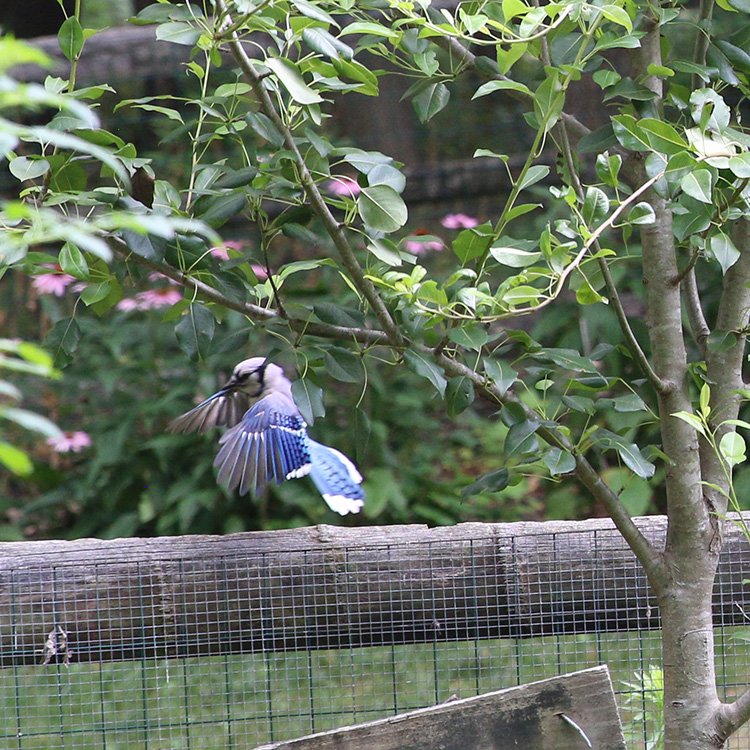
Almost exactly four years ago, we bought our current house. Our first house. We lived in Chicago at the time, so most of our home search happened online. We narrowed our search to a handful of homes that we toured over the course of a weekend when we flew to Philadelphia to check out potential homes.
The inside of the house was alright (though we renovated significant portions before moving in). It was the property, however, that caught our eye the most, including the large and fenced-in garden that the previous owners created.
When we decided to buy the house, I knew I would take a crack at putting the garden to good use. I had effectively no knowledge about gardening and absolutely zero idea that home gardens could be a key to tackling climate change. But… here I am growing more food than I know we will eat this year (planning to give some to friends or donate the excess to our local food shelter) and doing my best to nurture our Climate Resilience Garden.
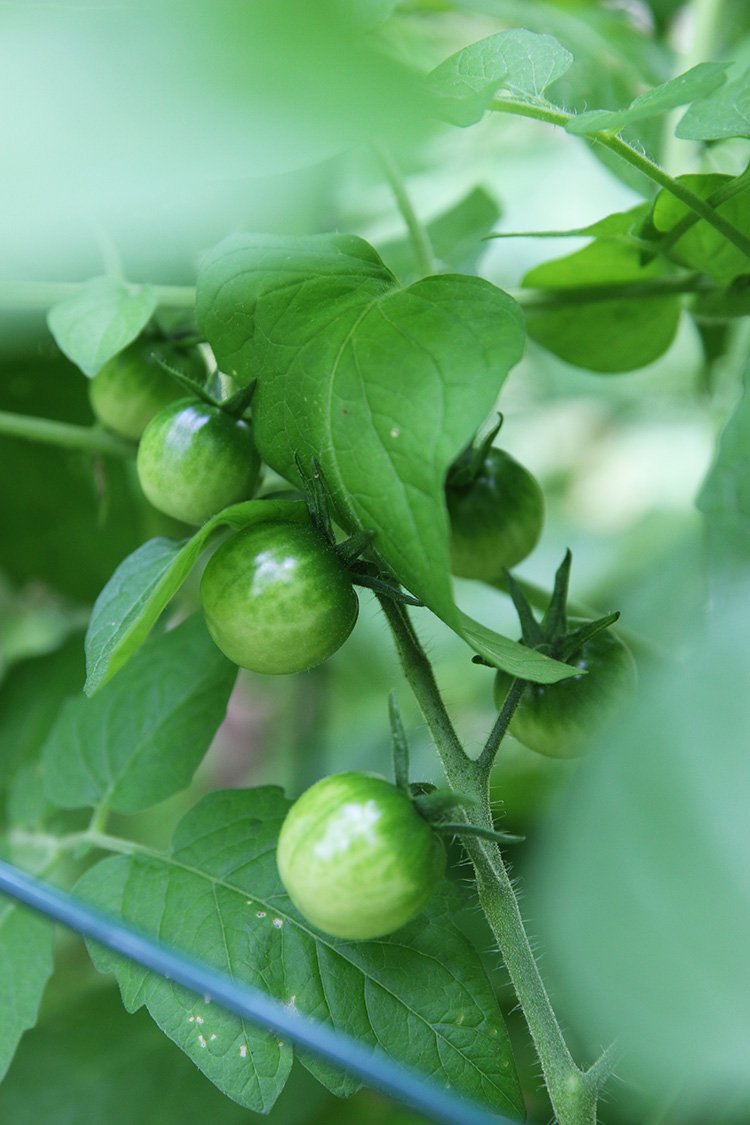
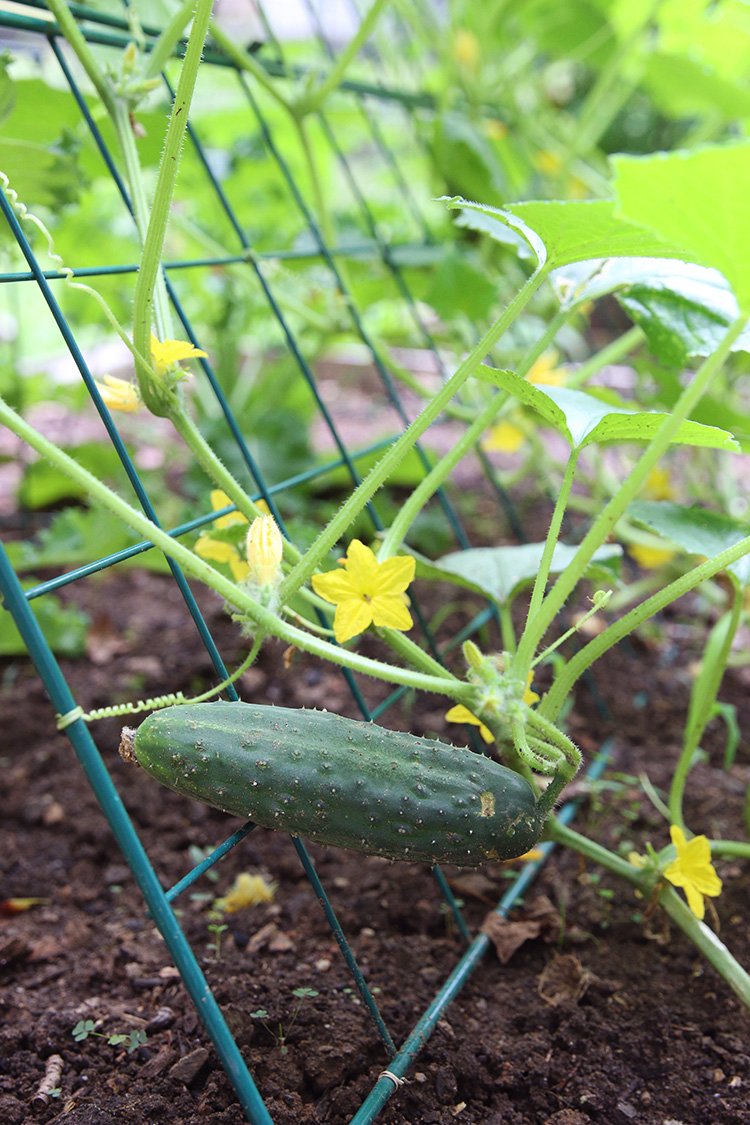
Climate Resilience Garden vs. Climate Victory Garden
Climate Resilience Gardens are also called Climate Victory Gardens. The term Victory Garden is a relic of wartime gardens when people were encouraged to grow their own food to maximize the food that was available to troops fighting the war.
However, some consider the term Victory Garden to be offensive for a handful of reasons. First, many Japanese Americans were great gardeners and relied on “Victory Gardens” to survive harsh and unethical internment camps. To equate such survival gardens with a victory is insensitive, at best.
Also, the victory garden implies something has been won or accomplished. These gardens indicate “victory” with respect to hunger. They symbolize food independence and food security.
Gardens Don’t Represent Victory For All
But for many in America, that’s not the case at all. Many people endure food insecurity as a consequence of a food system that benefits those with privilege and leaves hungry many people in marginalized communities.
The contrast between the perceived progress of “victory gardens” feels particularly troubling to communities like migrant farm laborers who work hard to bring food to our grocery stores yet can’t afford on their meager wages the food they provide to others.
Some Indigenous groups also feel particular peril from this term because many Indigenous communities who have long relied on the land as a reliable food source now live in poverty. They experience hunger because their land was stolen from them, and they cannot afford the food produced by the same system that is robbing them of their land.
These types of circumstances are far from victories and won’t be solved by backyard and community gardens. Using the term Resilience instead of Victory more accurately reflects the benefits food gardens provide without implying food injustice has been resolved.
What Can Food Gardens Fix?
Home and community gardens don’t fix the broken and systematically unjust food systems on which our country relies. However, they do provide broader and more immediate access to food, especially for those with inconsistent or limited access to nutritious food.
Thus, despite the benefits of food gardens, we aren’t really victorious yet. And to suggest home and community victory gardens free us of our collective hunger perils leaves a large swath of our neighbors left out of the “celebration” and overlooked.
While acknowledging that growing our own food doesn’t resolve all our food insecurity, gardens do provide some hunger relief and they provide great benefits to the environment. Gardens and healthy soil draw down carbon from the atmosphere, support thriving ecosystems, and help each of us reconnect with nature and our food sources. They aren’t the sole solution to hunger and climate change, but they’re surely a step in the right direction.
What Makes A Garden A Climate Resilience Garden
To turn any garden into a climate resilience garden, there are a few guiding principles that Green America highlights to encourage gardens that are safe, healthy, and great for the planet. Green America says this about a Climate Victory Garden:
Planting a garden has the power to change the world. Climate Victory Gardens are part of the climate solution by restoring soil health to drawdown carbon. Everyone can grow a garden, and everyone can take meaningful action on the climate crisis.
Green America
Green America wasn’t the reason I started a regenerative garden, but I was pumped to see it when I stumbled upon the site. Their list of guiding principles for climate victory gardens reinforced the practices I already employ to nurture our garden in a way that is healthy for the Earth.
10 Regenerative Practices To Grow A Climate Resilience Garden
The Climate Victory Garden initiative also gave me a few new ideas about things to make our garden even better. Here are ten ways we are growing our Climate Resilience Garden (or Climate Victory Garden as coined by Green America) to care for the soil, sequester carbon, support a biodiverse ecosystem, and help heal our planet in our own backyard.
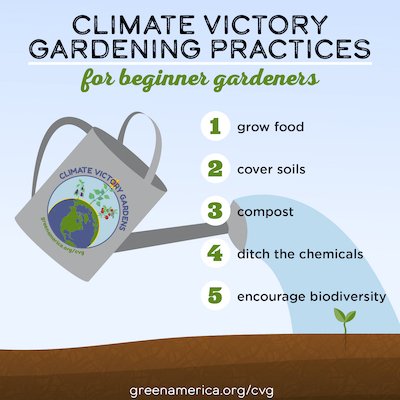
Grow Food
We have a handful of flowers to attract pollinators to the garden. I have also been adding a few native plants over time. Most of the garden, however, is comprised of plants that grow food for our family (and neighbors, if it is more than we need).
This year, we are growing tomatoes, beans, a variety of cucumbers and squashes, watermelon and cantaloupe, eggplant, several types of peppers, raspberries, blackberries, and strawberries. I tried growing kale and cauliflower, but they are not doing so well this year. We’ll see how they progress. We also have some herbs including oregano, green and purple basil, parsley, and lavender.
I love watching little seeds flourish into nourishing food for our family. I also know the boys learn so much about the food they eat from watching so much effort, energy, and resources go into the food’s production.
I hope by maintaining a garden and sharing what we learn we can encourage others to do the same and be part of a cultural change to increase food sovereignty.

Cover Soil
Plants, mulch, and other organic matter covering the soil help the soil thrive for several reasons. Covered soil holds more moisture and erodes much less slowly. Plant roots strengthen the soil structure and feed the millions of bacteria, micro-organisms, and other organisms that live in healthy soil. Healthy soil also helps filter water to protect local water sources.
I do my best to make sure the soil is covered as often as possible. During the growing season, I ensure that all the beds have plants in them. It’s amazing to see how much healthier the soil is when filled with growing plants than when it’s empty and dried out. When it’s too cold to grow food, I try to cover the soil with dried leaves, wood chips, and other organic matter.
This year, I am going to try leaving some of the plant stems and vines over the soil during the winter. I saw this recommendation in the Regenerative Gardening course I took from Kiss The Ground. The plants take up lots of nutrients while growing. Leaving the remains to decompose returns those nutrients to the soil.
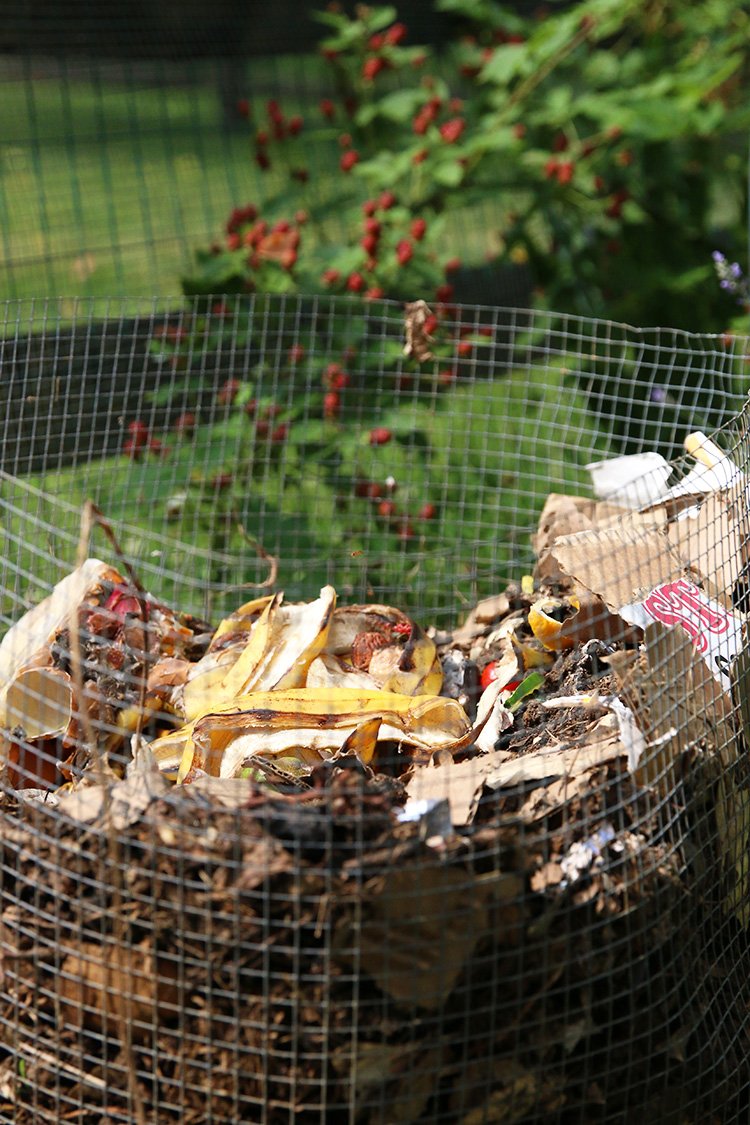
Compost
Composting is another great way to return nutrients from organic waste to the soil. Healthier soil supports stronger and more resilient plants, retains more water to prevent against impacts of drought, and sequesters more carbon from the atmosphere.
Further, composting helps ensure that organic matter decomposes properly. Organic matter in a landfill, without oxygen, creates methane during the decomposition process. Methane contributes to global warming. When decomposing with oxygen, as in a compost pile, organic matter does not produce methane. Thus, composting not only makes for healthier soil but also lessens the production of greenhouse gas emissions.
We have been composting since we moved into this house. I love composting (and have shared all sorts of resources for composting at home if you’re interested in trying it yourself)!
Ditch Chemicals
Many chemicals, including lots of fertilizers, harm the soil as well as the bugs and microorganisms that support a thriving ecosystem in the soil. The chemicals also runoff into waterways. Furthermore, chemical fertilizers are expensive and do not typically offer the full variety of nutrients soil and plants need to truly thrive.
Herbicides and pesticides kill many of the organisms in the soil that keep soil healthy and flourishing. When the soil is effectively dead from herbicides and pesticides, it requires chemical fertilizers to support life. It’s a bit of a vicious cycle, and all of these chemicals aren’t great for humans either.
In the end, it makes sense to care for the soil and plants without chemicals. This supports healthier plants, more productive soil, and cleaner water sources.
We use no chemicals in our garden at all. I accept that some bugs and pests are going to eat some of the plants. Healthy soil helps plants be resilient against disease and infestation. Not only do I know it’s better for the ecosystem, but I also feel better about eating foods that I know were not grown in chemical-laden environments.
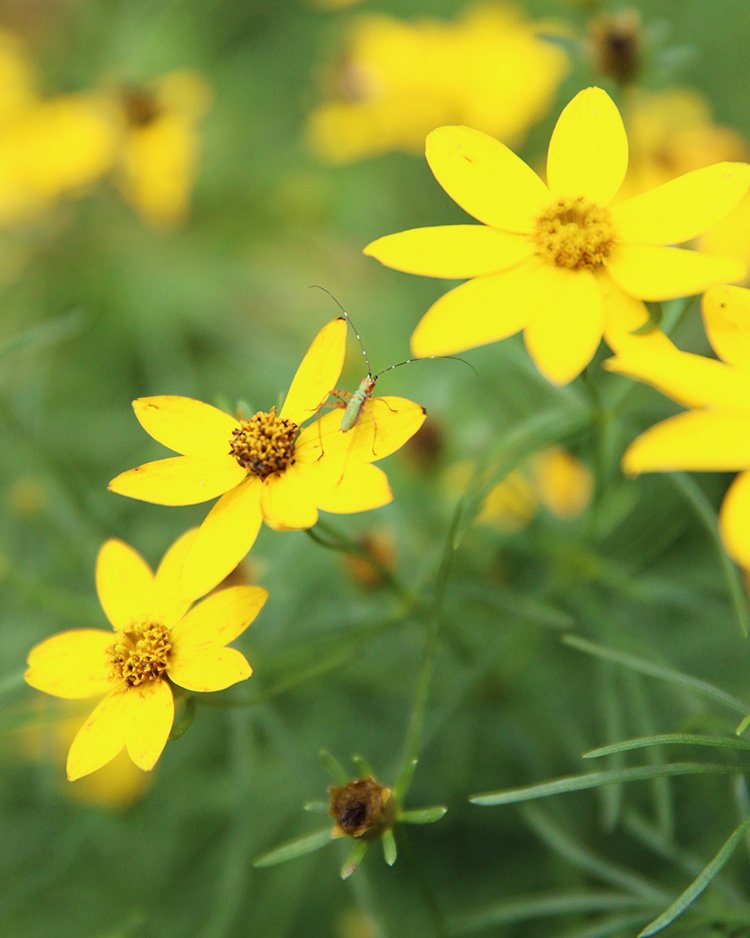
Encourage Biodiversity
Diversity is the spice of life. Biodiversity in a garden increases resilience and creates an overall healthier system. All The Organisms keep the garden in balance to prevent any particular infestation or pest from destroying everything.
We have a variety of crops, including different types of certain fruits and vegetables. For example, this year, we planted four different types of squash, three types of cucumbers, and a variety of peppers and tomatoes. We also have several plants to attract pollinators, including one section dedicated as a pollinator garden for my younger son.
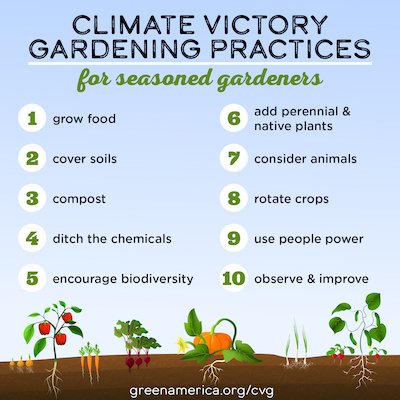
Add Perennials and Natives
It’s sort of common sense, I think, but native plants are the best options for gardens. Native plants have adapted to the climate and conditions of the local area. In many cases, they have developed symbiotic relationships with other native animals and organisms to help foster a healthy and sustainable ecosystem.
Perennial plants, or plants that come back each year without replanting, help reduce soil disruption, protect gardens and ecosystems, and help reduce weeds. Because they remain in the ground, they also cover soil throughout the whole year, so fewer specific cover crops are needed to protect soil outside of a growing season.
Not everything needs to be native or perennial. It’s fun to have some exotic plants and grow annual vegetables, so try to incorporate a mix of plants in your garden.

We have both annual and perennial plants. Our pollinator garden is all perennial plants (mostly because I’m too lazy to replant it each year). We also have raspberry, blueberry, and blackberry bushes as well as a peach tree.
This year, I planted an apple tree and two pawpaw trees. The little guys are tiny but they are hanging in there so far (fingers crossed they keep growing strong). It will be many years before they produce fruit, but I’m hoping to have a whole orchard in our yard someday.
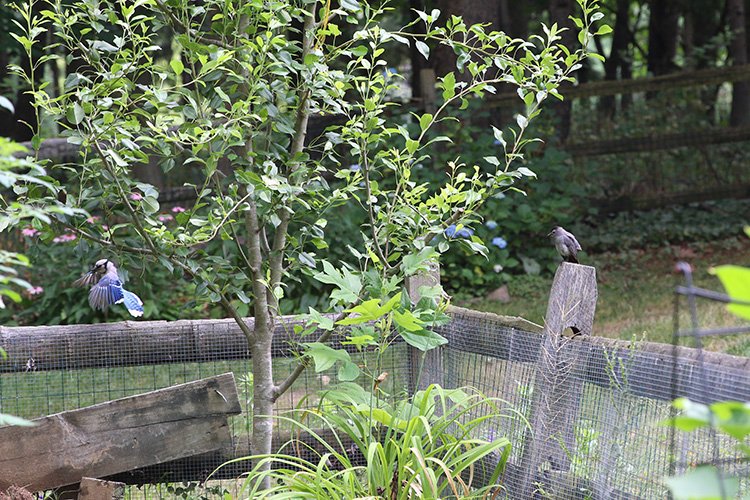
Consider Animals
Animals are a great source of fertilization for soil. They also eat pests and other insects that can damage crops. Nature effectively uses animals to maintain balance in all ecosystems, and our food gardens are no different.
We don’t have any domesticated animals like chickens or goats in our garden. I’d love to have chickens or ducks someday, but I’m not quite ready to make that commitment.
We also have a local company that brings goats to your yard (for a fee) and lets them live on your property for a week or two to naturally clean out brush and overgrown areas or provide natural maintenance. It’s pretty cool, and I would love to try it sometime.
Although we don’t have domestic animals, we welcome a variety of wild animals to our garden. We have lots of birds and squirrels. I’m pretty sure we have raccoons and skunks who visit at night. I’ve never seen them, but they leave indications of their visits (like messy compost and avocado skins lying around our garden).
Our garden is fenced in to prevent the many deer, groundhogs, and rabbits from making a quick lunch of everything in our garden. While I’m happy to share with some animals, certain animals would eat the whole darn thing before we had any chance of growing a thing. For now, I’ll let the deer and other hungry animals munch on everything that is outside our garden, which seems to be plenty.
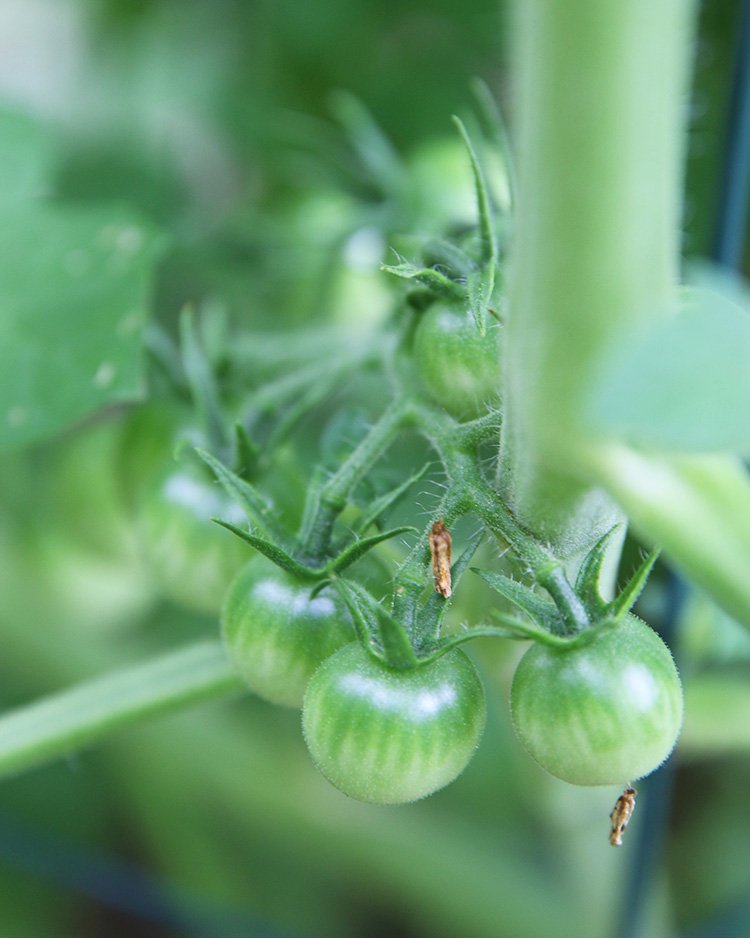
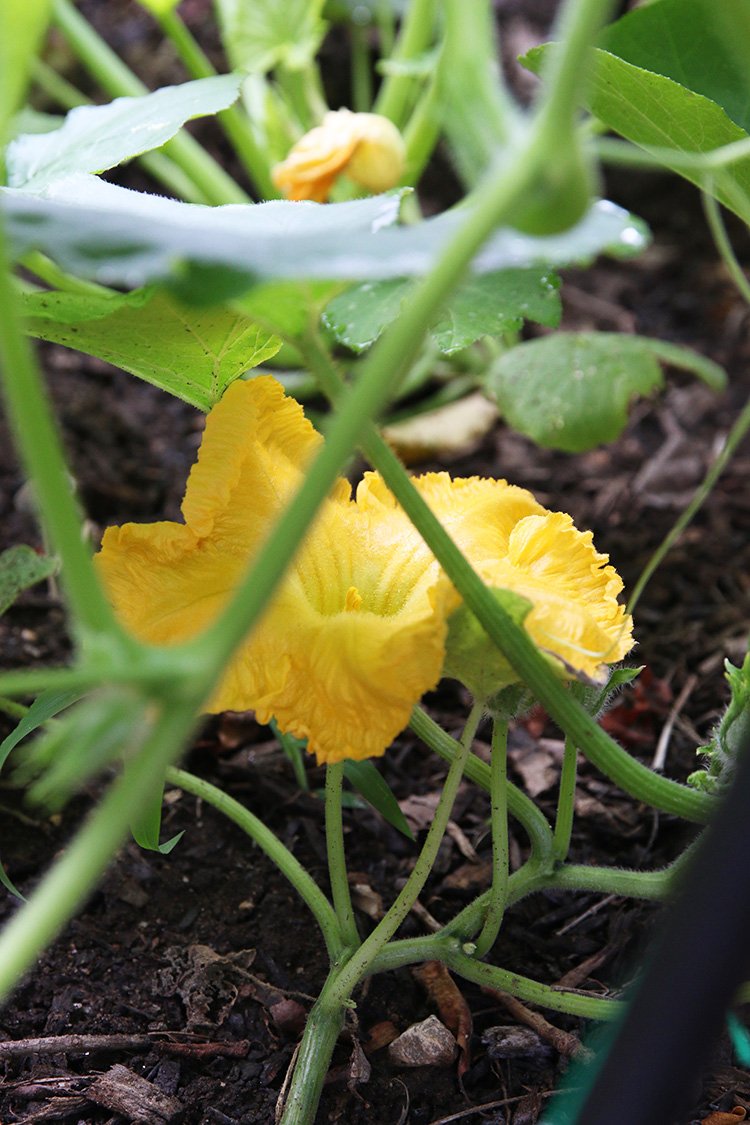
Rotate Crops
Each plant requires specific nutrients from the soil. Crop rotation helps diversify the nutrients being pulled from the soil, and certain plants can even help add nutrients like nitrogen back into the soil. Crop rotation also helps prevent disease and infestations among plants.
I try to rotate annual crops in our garden. Some things, like our raspberry bushes and other perennials, will of course remain in the same place. In those cases, I am more cognizant about adding layers of compost to the soil to help replenish nutrients as crops can’t be rotated.
Use People Power
Use of technology in the garden often requires energy consumption which results in carbon emissions. To the extent possible, using human labor reduces the use of energy and also reduces costs. Further, gardening is a really great way to connect with our food and the land.
I do almost everything by hand in my garden. It’s small enough that I can manage that. I pull weeds manually, plant everything by hand, occasionally flick bugs off of leaves, and prune and harvest everything by hand as well too.
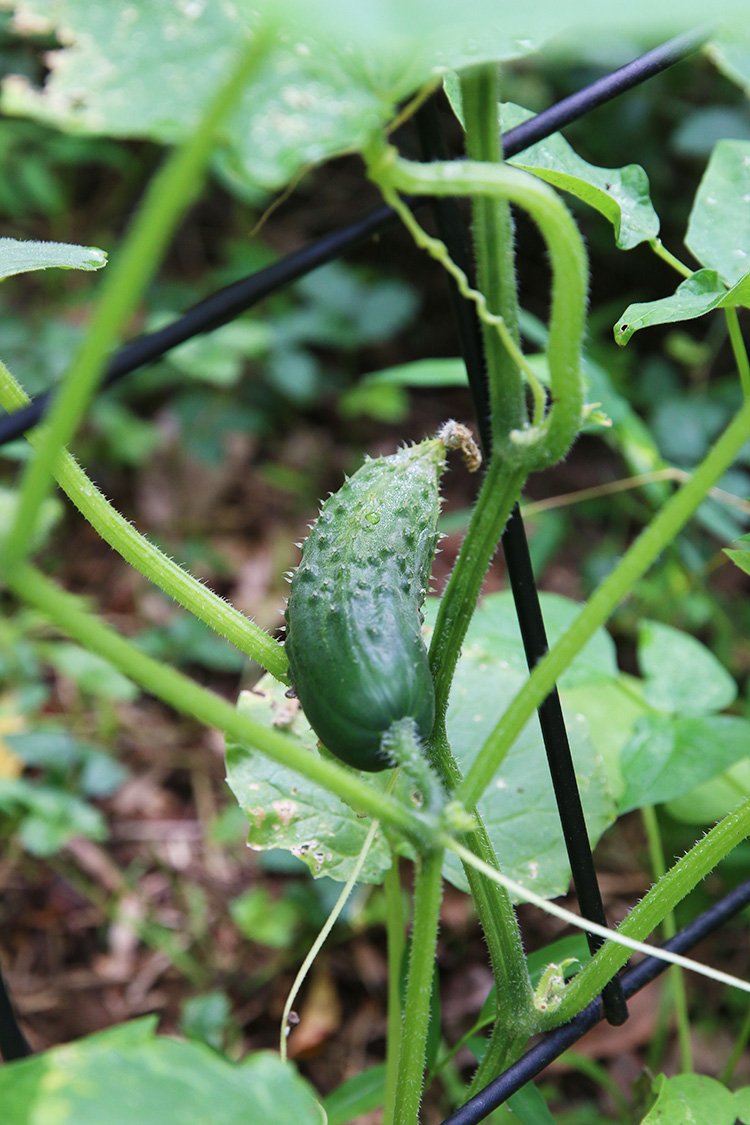
Observe & Improve
Gardening is a continuous learning process. We can also improve the quality of the soil, efficiency and effectiveness of our habits and practices, and the methods we use to grow from seed to harvest. Learning and paying attention to the soil, the water, the quality of the plants, and more helps us learn and become better stewards to our gardens.
I started taking notes in a dedicated notebook about my observations and lessons learned. It’s been super helpful as I make progress each year to make our garden more productive and efficient.
You can also test soil, monitor moisture, and make changes throughout the season based on observations. I haven’t pursued too many scientific tests yet, as I focus primarily on adjusting our garden based on my observations. In due time, maybe I’ll get serious enough to doing soil and water tests as well.
Climate Resilience Gardens to Promote Justice
Climate resilience gardens are one really great step toward environmental and food justice. Almost all of us can grow herbs in a windowsill, a few plants on a balcony, a small garden in the corner of our yard, or even a larger garden to feed our family and a few neighbors.
These gardens increase access to food, draw down carbon into the soil, support biodiversity and healthy ecosystems, and are generally good for human well-being.
Have you started a garden? Do you have any tips for growing a climate resilience garden? Do you practice any of the habits above?

